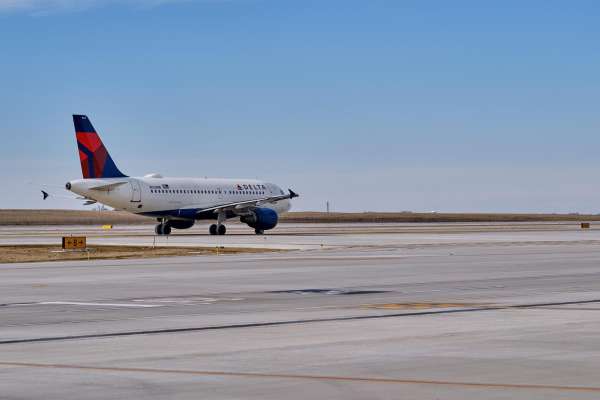Sticking the Landing
Garver’s depth and breadth of expertise brought civil airside design to the largest infrastructure project in Kansas City’s history.
They say you have to go big, or go home. But when it came to being the lead design firm for the civil airside components of Kansas City International (KCI) Airport’s new terminal, the largest single infrastructure project in the city’s history, Garver’s Aviation Team went big for the community that many at Garver call home.
An ambitious undertaking, the new terminal measures 1 million square feet and is replacing the three original terminals built in 1972. Thirty-nine gates, with room for expansion, and 6,200 parking spaces will help address a growing need for space and convenience. Addressing the airport’s need to be able to accommodate larger aircraft, and all that entailed, was up to Garver.
Responsible for multiple design components of the 90-acre concrete apron and 39 gates (with the option for future expansion to 47 gates) including geometric layout, pavement design, grading, airfield lighting system, marking of the apron and taxilane system encompassing the new terminal, and more, Garver not only created the needed flexibility for a range of aircraft sizes, but also an easier way for pilots to navigate the apron utilizing a virtual ramp control tower (leading to fewer gate delays caused by confusion), and an impressive cost savings of more than $10 million on the pavement design.
"Our approach to the pavement design for the terminal saved construction time, cost, and waste."
Brett Holt, PE
Aviation Team Leader
“Garver is committed to innovation, and this is a great example of it,” said Garver Aviation Team Leader Brett Holt, PE. “Our approach to the pavement design for the terminal saved construction time, cost, and waste.”
That innovative approach involved recycled pavement. Garver developed the P-209M specification, the gradation and requirements for the category of aggregate from the demolished concrete to be used in the construction of the new apron, in conjunction with the FAA. This meant money and time were saved up front without jeopardizing future FAA funding.
In addition to thinking outside the box, Garver completed work within an optimal time frame: “We delivered designs in 12 months, less than half the time expected,” said Garver Aviation Leader Jason Frank, PE.
For Garver, the capacity to “go big” is found in deep, firm-wide layers of cross-disciplinary experience and expertise. Already a considerable force as one of the largest airfield design teams in the country, Garver’s Aviation Team tapped additional in-house expertise in Transportation, Water, and Construction Services to design airfield drainage solutions, multiple retaining walls, a centralized glycol storage facility, and more, plus keep construction safe and on schedule.
Upgrading the apron to allow for larger aircraft meant that drainage structures had to be able to bear more weight. Nate Wood, PE, was one of Garver’s structural engineers called upon to coordinate with the project’s contractors and architect, and to find solutions for modifying around 20 existing drainage structures and designs for up to 50 new ones.
Structural engineers also played key roles in designing a massive retaining wall that runs around the northern side of the apron and rises to nearly 30 feet. On the construction side, Garver collaborated with the design-build contractor and Kansas City Aviation Department to develop construction safety and phasing plans that minimized operational impacts, while maximizing the construction area to accelerate the construction schedule. Overall, the scale of expertise and coordination was as sprawling and complex as the project itself.
“The project’s scale was significant, but the coordination was bigger than anything we put on the ground,” Holt said.
A key advantage of having so much cross-discipline support was that one phone call could solve a problem. Frank compared executing a project this complex to being in an emergency room: “Contractors need answers quickly. It’s an emergency, just like when someone walks into the ER, they need a response. It’s the same here to keep everything moving forward. Having in-house expertise to get needed answers and information quickly is critical.”
History making projects require exceptional teamwork, expertise, experience, and range. Garver has them all.






Share this article